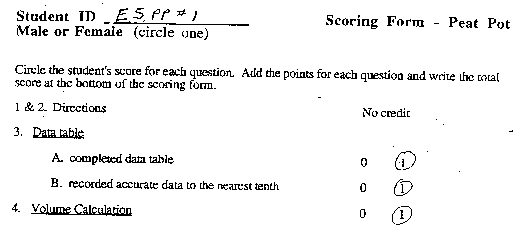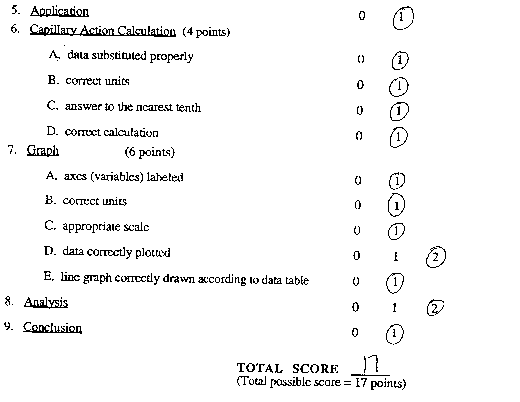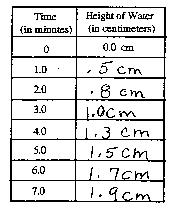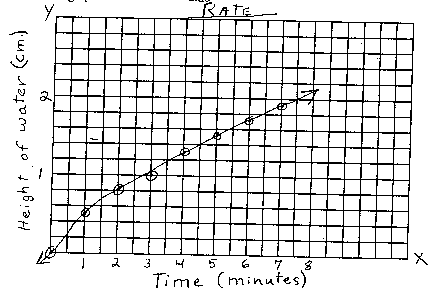 |
 |
|
|
|
|
Grade 5-8 Performance Task Student #1
Task:At this station, you will measure the rate of capillary action in a peat pot. Materials:
Background:Peat is a surface deposit consisting of decayed plant materials. It forms a very spongy soil, displaying obvious capillary action. Commercially produced garden pots formed of pressed peat provide a model for observing capillary action in soil. Directions:1. Measure 50mL of water and pour it in the small dish. 2. You will be placing the peat pot in the water, as shown in the diagram, and will measure, over time, how high the water rises along the sides of the pot. 3. Now place the peat pot in the dish, large end down. Start the timer and measure the height of the water line above the bottom of the pot every minute for seven minutes. Record your observations to the nearest tenth of a cm. in the data table.
4. After 7 minutes, remove the pot and find the volume of the water that is left in the dish. Calculate the amount of water absorbed by the pot.
5. How many milliliters of water did the pot retain
in its pore spaces? 6. Calculate the average rate (cm/min) of capillary action for seven (7) minutes. Show your work in the space below.
7. Draw a line graph of the data using time and height of water as your variables. Label both axes.
8. Using complete sentences. describe the results plotted on your graph. Include both variables in your description.
9. Write a conclusion based on your experiment.
Go to Next Student Work |







